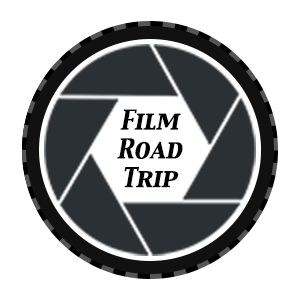I have been a hybrid shooter since returning to film in 2014. I have never abandoned digital because digital offers some distinct advantages over film in several respects. First, digital is more convenient. The storage devices are smaller and easier to transport than film. It’s quicker to turn around the results of your shoot, even if you develop and scan your own film. Digital is more economical, particularly after the initial investment in your equipment. Finally, digital is better at handling low light situations. I was willing to compromise convenience, but in my mind, film simply did not compare to digital photography at night.
However, I wasn’t going to abandon the idea of shooting film at night completely, and still need to work to improve my skills in that area. Part of the problem is that I hate carrying around a tripod. I will use it when I make a point of shooting the night sky, but for walking the streets of a city, I can’t bear the thought of setting up a tripod to make an image. I want to be able to shoot film at nighttime handheld. That seems like a tall order, if not an impossible one.
My latest effort came on a weekend trip to New York City. I didn’t have much time in the city, but I wanted to capture a few images at night. I was staying at the New York Edition Hotel, located in the Met Life Tower at Madison Square Park. Our suite had amazing views of the Flatiron Building (sadly covered in scaffolding) and the Empire State Building. Visiting the Empire State Building at sunset was on the agenda for our first evening. So off I went with my Canon EOS R digital mirrorless camera, and the Canon EOS 1v film camera, with some Lomography Metropolis and Kodak Portra 800.
Something that slipped my mind was that the Lomography film was not DX coded. I generally shoot Metropolis at ISO 200, but while at the top of the Empire State Building in the middle of a storm, I ended a roll of Portra 800 and quickly popped in a roll of Metropolis without setting the ISO. So the camera simply used the last setting, which was 800. I realized my mistake after that roll was complete, so when I sent it off to Richard Photo Lab, we discussed how to process the film. Together we made the decision to process it normally and make adjustments in scanning. That’s one thing I really love about Richard Photo Lab – you have a relationship with the lab. They are your partners, trying to get you the best images possible. I am always impressed with their professionalism and great service.
So now to the images. I’m not fooling myself – the digital images are way better in terms of detail – but the film images aren’t too bad, and have a different feeling about them.
In this first set, you see the view from the Empire State Building toward One World Trade Center. It wasn’t completely dark yet. We were there at sunset, but a big storm was rolling over which made it look much darker. The images were taken with two different lenses. I switched between the Canon 24mm f/1.4 and the Canon 50mm f/1.2, so these are not precise comparisons. It’s clear there is a lot more detail in the digital shot, but I’m really drawn to the film image. Both do a great job of conveying the intensity of the storm that was coming our way. I’m amazed I could get anything given the force of the wind.
Digital:

Kodak Portra 800:

In this set we see a stronger distinction, and see the strength of digital at night. The storm had passed, but there were still clouds moving across the sky as we arrived home that evening. The detail on the digital image is pretty striking compared to the film image. However, a lot may have to do with my film choice. The film image was on Lomography Metropolis, and was the roll I shot at ISO 800. However, it does have an interesting mood to it given the grain and the clouds.
Digital:

Lomography Metropolis at ISO 800:

It’s interesting to compare this set, if only to say that I should break out a tripod once in a while. But they are two different looks. It was evening and the sky was very blue, so the digital is probably a more accurate representation of the scene.
Digital:

Lomography Metropolis at ISO 200:

And shortly after those shots were taken, I took this image of the Met Life Tower.
Digital:

Lomography Metropolis at ISO 200:

One last comparison is the same scene which I shot from the Empire State Building on both Metropolis and Portra 800 so you can see the two films side-by-side. There is really no contest. Portra 800 is definitely superior in capturing the scene.
Lomography Metropolis at ISO 800:

Kodak Portra 800:

If I didn’t like the film image of the storm so much, I would simply reaffirm my conclusion that digital beats film hands down at night, but I will continue to work at improving my nighttime film images, using Portra 800. Here are a few more of my nighttime images, both film and digital.
More film…

Lomography Metropolis @ ISO 200 
Lomography Metropolis at ISO 800 
Kodak Portra 800 
Kodak Portra 800 
Kodak Portra 800 
Kodak Portra 800 
Kodak Portra 800 
Kodak Portra 800 
Kodak Portra 800 
Kodak Portra 800
More digital…
Coming soon…
More film images from NYC. Stay tuned!






I’ve recently bought a rangefinder and I’m debating whether it’s worth getting some 800-speed film to shoot without a flash at night. Thank you for the comparison and sample images – I live not far from Madison Square Park.